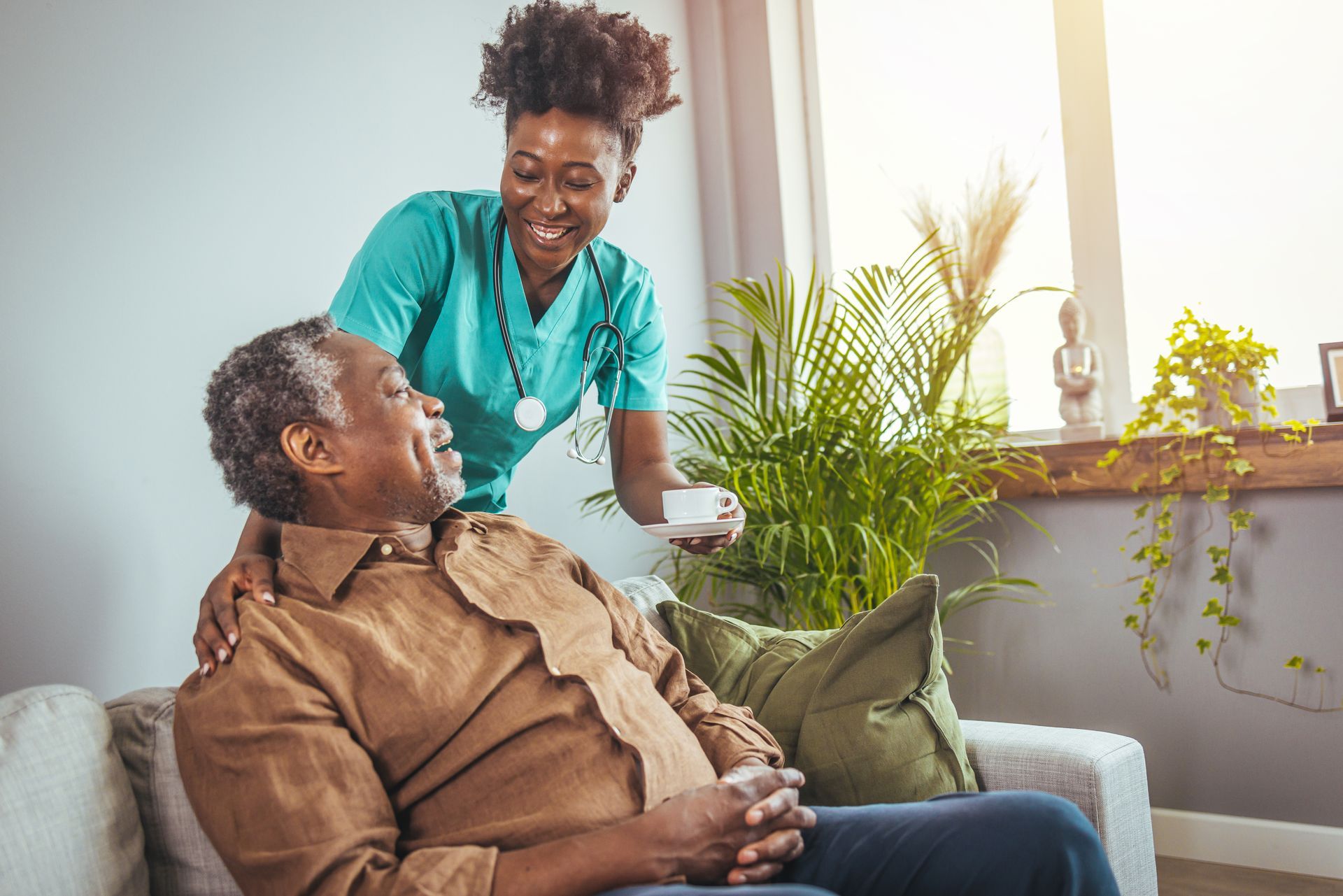BLOG
Combating Loneliness: Building Meaningful Connections in Senior Living Communities
Loneliness among seniors is a pressing concern in today's society. As individuals age, factors such as retirement, loss of loved ones, and health challenges can lead to social isolation. This isolation affects emotional well-being and has significant health implications. Senior living communities are uniquely positioned to address these challenges by fostering meaningful connections among residents.
Understanding the Impact of Social Isolation on Seniors
Social isolation profoundly affects seniors' physical and mental health. Studies indicate that loneliness increases the risk of dementia by 50%. Additionally, isolated seniors face a 29% higher risk of heart disease and a 32% increased risk of stroke. The health effects of loneliness are comparable to smoking 15 cigarettes daily.
Mental health is equally impacted by isolation. Loneliness can lead to depression, anxiety, and decreased cognitive function. Engaging in meaningful activities with others has been shown to improve mood and cognitive abilities. Therefore, addressing social isolation is crucial for maintaining seniors' overall well-being.
The financial implications of isolation are also noteworthy. Social isolation among older adults contributes to an estimated $6.7 billion in additional Medicare spending annually, primarily due to increased hospitalization and nursing home expenditures.
Recognizing the multifaceted impact of social isolation underscores the importance of proactive measures. Senior living communities play a vital role in implementing strategies to combat loneliness and promote a sense of belonging among residents.
The Role of Senior Living Communities in Fostering Connections
Senior living communities are designed to encourage social interaction. By offering a variety of communal spaces and organized activities, these communities create opportunities for residents to build relationships. Regular social engagement has been linked to improved mental health and a reduced risk of cognitive decline.
Structured programs, such as group exercise classes, art workshops, and game nights, cater to diverse interests. These activities not only entertain but also promote physical health and mental stimulation. For instance, participating in group exercises can help seniors achieve the recommended 150 minutes of physical activity per week, enhancing overall health.

Dining experiences in senior living communities also serve as social hubs. Shared meals provide residents with regular opportunities to engage in conversation and develop friendships, and this communal aspect of dining can significantly reduce feelings of loneliness and isolation.
Staff members play a crucial role in facilitating connections. By organizing events, encouraging participation, and providing support, they help create an inclusive atmosphere. Their involvement ensures that all residents, including those who may be more introverted, have opportunities to engage socially.
The physical design of senior living communities also impacts social interaction. Features like open common areas, accessible outdoor spaces, and comfortable seating arrangements encourage spontaneous resident interactions. Thoughtful design fosters a sense of community and belonging.
Implementing Programs to Combat Loneliness
Effective programs to reduce loneliness are tailored to residents' interests and needs. Personalized activity plans ensure that each individual finds engaging and enjoyable pursuits. This customized approach increases participation and satisfaction.
Intergenerational programs have proven beneficial in combating isolation. These programs provide fresh perspectives and mutual learning opportunities by facilitating interactions between seniors and younger generations. Such social engagements can revitalize seniors' sense of purpose and connection.
Technology-based initiatives also offer avenues for connection. Teaching residents to use video calling platforms enables them to maintain relationships with distant family and friends. Virtual group activities, such as online book clubs or games, can supplement in-person interactions, especially when physical gatherings are limited.
Volunteer opportunities within the community empower residents to contribute meaningfully. Engaging in service projects, such as organizing events or assisting peers, fosters a sense of purpose and belonging and enhances self-esteem and social networks.
Regular feedback from residents is essential to ensure that programs remain relevant and effective. Surveys and open forums allow residents to voice their preferences and suggest new activities. This collaborative approach leads to a more vibrant and responsive community.
Designing Spaces That Encourage Interaction
The physical environment of a senior living community significantly influences social engagement. Common areas should be inviting and accessible, encouraging residents to gather and interact. Comfortable seating, adequate lighting, and pleasant aesthetics make these spaces appealing.
Outdoor spaces, such as gardens and walking paths, provide additional venues for socialization. Access to nature has been shown to improve mood and reduce stress. Organizing outdoor group activities, like gardening clubs or walking groups, combines physical activity with social interaction.

Private spaces for small gatherings are also important. Not all residents may feel comfortable in large groups; cozy nooks or small lounges offer alternatives for intimate conversations. These areas cater to diverse social preferences, ensuring inclusivity.
Safety and accessibility are paramount in design considerations. Features like handrails, non-slip flooring, and clear signage help prevent accidents and make spaces navigable for all residents. A safe environment encourages more frequent use of communal areas.
Incorporating residents' input into design choices fosters a sense of ownership over their living space. When seniors have a say in their surroundings, they feel more comfortable and engaged in community life. Thoughtfully designed spaces can enhance social interactions and contribute to overall well-being.
Encouraging Family and Community Involvement in Senior Living Communities
Family and community engagement play a crucial role in reducing loneliness among seniors. Regular visits from loved ones provide emotional support and strengthen social connections. Research shows that seniors with strong family ties experience lower levels of depression and cognitive decline. Encouraging frequent interactions with family helps seniors maintain a sense of belonging and purpose.
Senior living communities can facilitate family involvement by hosting events that encourage participation. Holiday gatherings, themed dinners, and educational seminars provide opportunities for residents to spend quality time with family members. These events help maintain relationships and create lasting memories. Family engagement in community activities also reassures seniors that they are valued and cared for.
Community partnerships further enrich residents’ social lives. Collaborating with local schools, religious organizations, and volunteer groups fosters meaningful interactions. For example, inviting students to perform music or read to seniors strengthens intergenerational bonds. Community involvement brings diverse experiences into senior living communities and enhances residents’ connection to the outside world.
Encouraging family members to participate in caregiving discussions also strengthens relationships. Involving them in decision-making about health and lifestyle choices fosters trust and ensures seniors receive personalized support. Transparent communication between families and staff promotes collaboration in providing the best possible care.
Technology can also help bridge the gap between seniors and their loved ones. Video calls, social media, and messaging apps allow residents to stay connected with family members who live far away. Providing access to and training on digital communication tools enhances social engagement and reduces feelings of isolation.
Finding Connection in Senior Living Communities
Social connections are essential for seniors’ well-being, especially in senior living communities. Meaningful relationships improve mental, emotional, and physical health. Senior living communities play a vital role in combating loneliness by fostering an inclusive and engaging environment.
At Assured Senior Living, residents benefit from a supportive and socially active community. With personalized care, engaging activities, and welcoming spaces, seniors can thrive in a connected environment. Family involvement, community partnerships, and wellness programs further enhance the quality of life.
Choosing the right senior living community means prioritizing social engagement and emotional well-being. Assured Senior Living is committed to creating meaningful connections for residents every day. Contact us today to learn more about our community and how we support social engagement.















